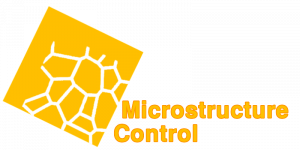The principle aim of our thermochemical data supply service is to satisfy our customers needs for consistent, carefully assessed data of known quality in an easily usable form.
GTT offers comprehensive data services to the customers by its extensive resources and partners associations in two forms:
- Complete Databases from internationally recognised sources (view the FactSage Database Documentation)
- Customized data files (view the Custom Data section)
The service is established on many years of practical experience in the field of technical thermochemistry, including supply of data to a large customer base.
The co-operation with FACT/CRCT, Montreal, has not only lead to the development of FactSage but also enables us to incorporate the extensive FACT database into our suite of data sources from which to generate customised datafiles.
Being members of SGTE permits us to offer the extensive databases of SGTE and to use them as sources on which to base the work on customised datafiles. Furthermore, we cooperate with The Spencer Group, another member of SGTE and IRSN, Institut de Radioprotection et de Sûreté Nucléaire in France.
Calphad databases
All thermodynamic databases are developed following the Calphad methodology. The term Calphad stems from Calculation of Phase Diagrams, which has been the origin of the development of our thermodynamic databases – but today our users do much more than simply calculating phase diagrams, from calculation of a single complex equilibrium to viscosities. In Calphad databases, expressions for the Gibbs energies of all relevant phases have to be stored. The most complex cases are solution phases, e.g. liquid metals and slags or solid FCC/BCC/HCP, intermetallic and intermediary phases. The database developers review all relevant (mostly experimental) literature to derive a single set of Gibbs energies of all relevant phases. All databases are updated regularly, the most important ones even every year when the new FactSage version is released. A list of updates in the past can be found here.
GTOx – GTT Oxides Database
The largest database available for oxides is the FACT FToxid database. At GTT we have developed another oxide database, GTOx, for two reasons: On the one hand, GTOx will give a second opinion to our customers who have licensed the FToxid database. On the other hand, GTOx includes a better description for some combinations of oxides, e.g. high Na2O- and K2O-containing systems like biomasses (2016-2019) or Vanadium oxide containing systems (2019-).
Why do many customers value the second opinion of GTOx? GTOx is developed independently of FToxid, i.e. the literature review is performed independently and GTOx uses a different thermochemical model to account for short-range ordering in the slag phase. Often, experimental results reported by different authors conflict with each other and the database developers have to give preference to one source. To give an example, the melting point of pure CaO is accepted to be 2572°C in FToxid while it is 2899°C in GTOx. While there is probably no application where the melting point of CaO is important, the difference is relevant to all slags that contain CaO, i.e. nearly all slags encountered in metallurgy or during coal and biomass combustion, since the different Gibbs energy functions of CaO are extrapolated to binary, ternary and all higher-order systems containing CaO. If you are interested in additional information, have a look at the GTOx database documentation or contact us!
aiMP (ab initio Materials Project) and aiOQ (ab initio OQMD)
All traditional Calphad databases are humanly curated. While this ensures excellent quality, it also limits the speed with which new data is added. The pure substance databases in FactSage contain data for thousands of solid compounds. However, there are 94 elements naturally occuring on earth, meaning that 4371 binary systems have to be considered. In each binary system, there can be several intermediary phases with different crystal structures (consider the 9015 crystal structures types in the Inorganic Crystal Structure Database ICSD), so the expected number of binary phases is in the range of millions – with many more ternary and higher-order compounds! The Materials Project is a repository of quantum mechanically calculated properties at 0K for more than 100’000 compounds. The Open Quantum Materials Database (OQMD) is a similar repository, covering even more than 1’000’000 compounds. We at GTT have upscaled the thermodynamic stability to relevant temperatures and have generated aiMP (2019) and aiOQ (2022), the first commercial Calphad databases built on quantum mechanical calculations and machine learning. Some details on the methods used can be found in the aiMP and aiOQ v6.3 documentation. The description of the solid phases in aiMP and aiOQ databases is largely compatible with the SGTE Solutions Liquid phase (for metals), FToxid and GTox (for oxides) and FTsalt (for salts), so that phase diagrams can be calculated. There are three major applications for this database:
– Using as starting point for a CALPHAD assessment.
– Combining standard FactSage databases with aiMP to estimate thermochemical properties in parts of chemical compound space where otherwise no data is available to describe the behavior of minor elements.
– Scan systematically complete chemical space using only AIMP/AIOQ in a materials informatics approach to identify interesting materials.
We make it easy to use the data as starting point for a binary CALPHAD assessment. You can download any binary system from aiMP here.
Please contact us if you are interested in further information!
Areas of Application
We offer databases for applications in the following areas:

Our databases can help you to design from scratch new ceramic materials and metallic alloys with improved properties, including high entropy alloys. You will go beyond the present material design paradigms!
Many Databases may be used to perform calculations in this application area. Some examples are:
- FTcopp – FactSage copper alloy database
- FTlite – FACT light metal alloy database
- FTmisc – FACT sulfide, alloy and miscellaneous database
- FTOxCN – FACT metals, oxides, carbides and nitrides database
- FToxid – FACT oxide database
- FSstel – FactSage steel alloy database
- SGnobl – noble metal alloy database
- SGPS – SGTE 2018 pure substance database
- SGTE – SGTE 2017 alloy database
- SpMCBN – metal borides and nitrides alloy database
- aiMP – ab initio Materials Project database
If you wish to look at some applications in the area of “Alloy and Material Design”, please visit our blog.

If you need to predict which phases are expected in a newly developed alloy or to optimize the phase constitution of an existent alloy, our specialized databases will help you at this task. This applies to both solidification during casting or welding and to heat treatment processes.
Many Databases may be used to perform calculations in this application area. Some examples are:
- FTcopp – FactSage copper alloy database
- FTlite – FACT light metal alloy database
- FTmisc – FACT sulfide, alloy and miscellaneous database
- FTOxCN – FACT metals, oxides, carbides and nitrides database
- FToxid – FACT oxide database
- FSstel – FactSage steel alloy database
- SGnobl – noble metal alloy database
- SGTE – SGTE 2017 alloy database
- SGsold – SGTE solder alloys database
- SpMCBN – metal borides and nitrides alloy database
- aiMP – ab initio Materials Project database
If you wish to look at some applications in the area of “Microstructure Control”, please visit our blog.

In process metallurgy one often needs to investigate multiphase, multicomponent equilibria, when the gas, liquid and solid phases may coexist. The thermal balance is also a matter of concern in metallurgical process design. In these complex situations, our software coupled with the right set of databases can provide useful help!
Many Databases may be used to perform calculations in this application area. Some examples are:
- FToxid – FACT oxide database
- GTOx – GTT oxide Database
- FTmisc – FACT sulfide, alloy and miscellaneous database
- FTsalt -FACT salt database
- FThall – FACT database for Hall aluminum process
- FSstel – FactSage steel alloy database
- FTlite – FACT light metal (Al, Mg, Ti) alloy database
- FScopp – FactSage copper alloy database
- FSlead – FactSage lead alloy database
- FThelg – FACT database for ideal and non-ideal aqueous solutions
- FTOxCN – FACT metals, oxides, carbides and nitrides database
- SGTE – SGTE alloy database
- SGPS – SGTE pure substance database
- aiMP – ab initio Materials Project database
In the broad area of process metallurgy, depending on the specific sub-area, there are different databases which are most adequate for each sub-area. We may stratify these sub-areas and corresponding databases as follows:
- Hydrometallurgy: FactPS, FTmisc, FThelg
- Electrometallurgy: FTsalt, FThall
- Pyrometallurgy:
- ferrous alloys: FSstel, FTmisc, FToxid, GTOx, FactPS
- non-ferrous alloys: FScopp, FTlite, FSlead, FTmisc, FToxid, GOTx, FactPS
If you wish to look at some applications in the area of “Process Metallurgy”, please visit our blog.

In the areas of gasification and combustion technology, our databases will help you to avoid undesired phases and to keep the thermal balance under control. They are invaluable when designing new processes in the areas of energy generation and energy conversion.
Many Databases may be used to perform calculations in this application area. Some examples are:
- FactPS – FACT pure substances database
- FToxid – FACT oxide database
- GTOx – GTT oxide database
- FTmisc – FACT sulfide, alloy and miscellaneous database
- FTsalt -FACT salt database
- SGPS – SGTE 2018 pure substance database
If you wish to look at some applications in the area of “Combustion and Gasification Technology”, please visit our blog.
If you are only interested in phase diagrams without their Gibbs energy background then you should visit the consulting section of this website.
